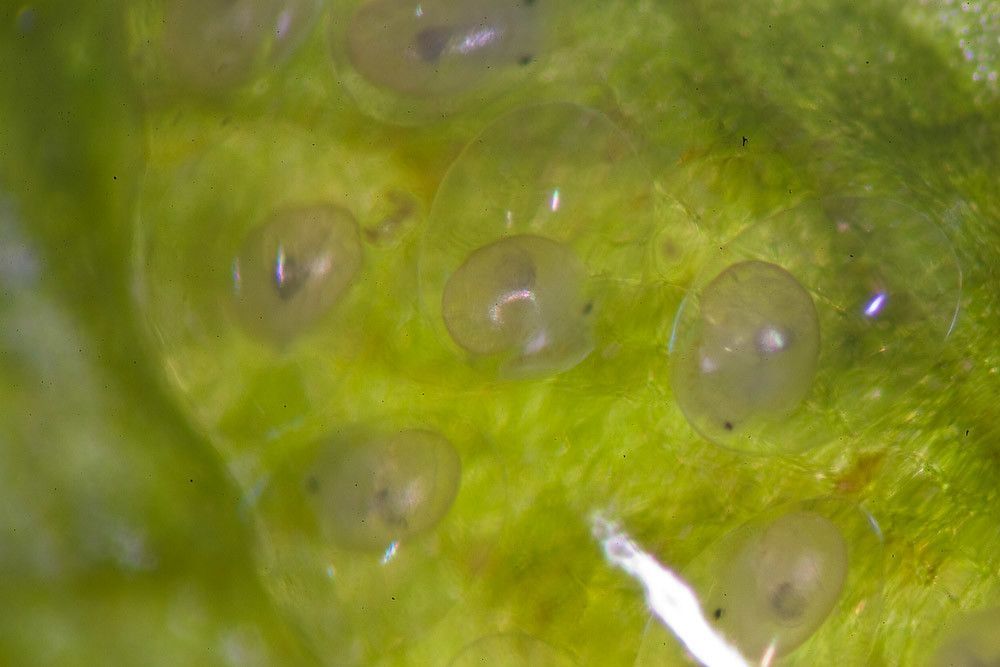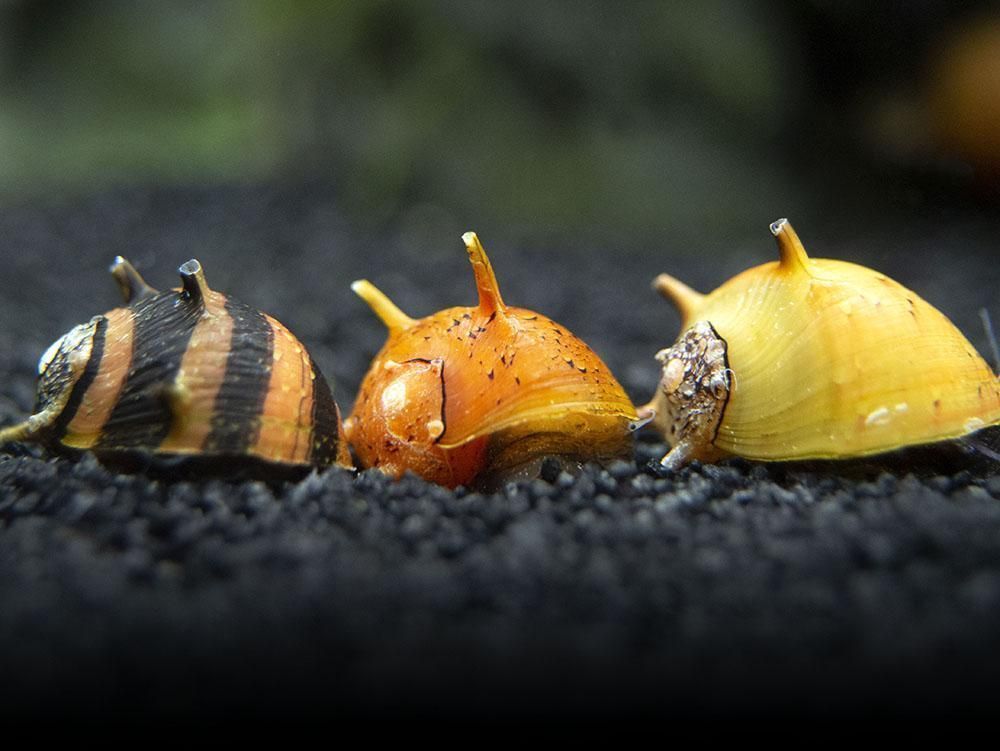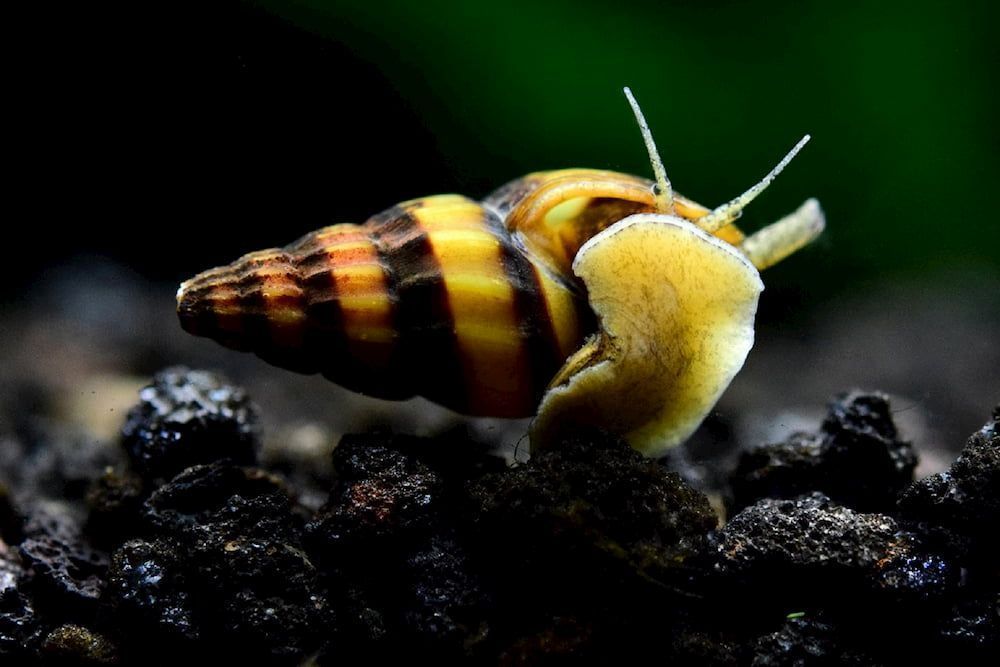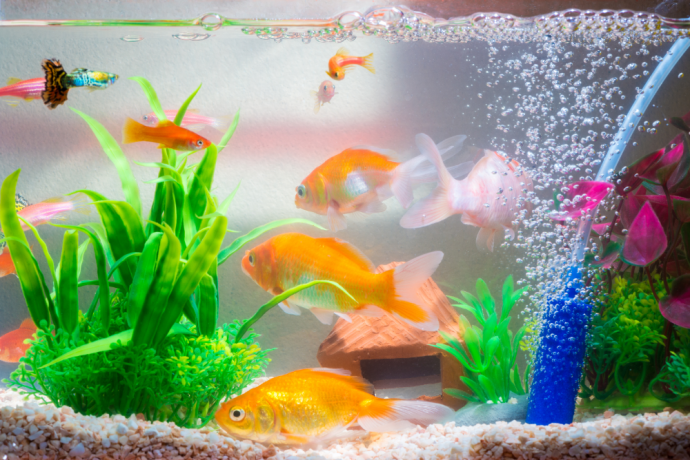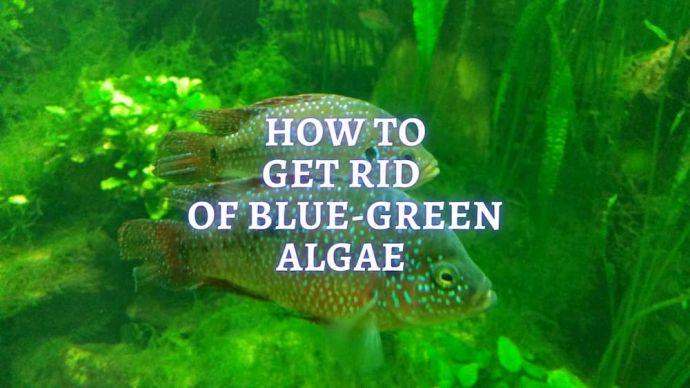Snail Eggs in Aquarium and What to Do with Them and How to Remove if Needed
Written by:
Author: Vicki Smirnova
Vicki Smirnova is a professional writer and editor who adores animals and helps readers get along well with their pets. She has been working in digital media for more than 5 years and has great experience writing content about lifestyle, including pets. Vicki specializes in dog health and nutrition, cat feeding, dog training. She is an aquarium lover and is passionate to write about fish care at home. Also, Vicki headed several websites and worked as a news editor.
View all 244 articlesLearn about our editorial process and veterinary review board.
Viewed: 92
Updated on: 01/27/2023
Each aquarium is an artificially created ecosystem in which gastropods play an essential role. They do not require additional care and are natural bottom cleaners, eating up rotting plants, leftover fish food, and dead fish. Crawling onto the glass, the snails partially clear it of fouling but do not entirely eat the green coating, only gnawing through its winding paths.
Freshwater gastropods are as essential to an aquarium as fish and aquatic plants. Some settle in the ground on their own since their eggs, and young live on the roots and leaves of aquatic plants. Having bought and installed a new plant, the aquarist, after some time, will find that the number and variety of the snails have increased dramatically.
What do freshwater snail eggs look like in a fish tank?
Some gastropods in an aquarium can lay eggs; others can give birth to already-formed mollusks. Eggs are found on the walls of the aquarium, decorations, algae, and in the ground. Often, they are scattered throughout the water, free swimming.
Production of Aquarium Snail Eggs
Some snails do not need a couple; they are same-sex. Even if there is only one snail in the aquarium, after a while, it will produce offspring. Snail eggs are laid on algae leaves, aquarium walls, pebbles, and decor items. Some types of masonry cannot be transferred to another place, as it will lead to the death of the offspring. Some snail species burrow into the sand and stay there until they lay their eggs – up to a hundred cubs can hatch into the light.
Reproduction of heterosexual aquarium gastropods involves a male and female settlement within the same reservoir. They are ready to breed when the water temperature rises and if more food is added to their diet. Snails are generally voracious creatures, so they will quickly eat food. Both gastropods of different sexes and the same sex can lay eggs above water and on the water’s surface. Above-water spawners (genus Pomacea and Pila) need to make room above the water surface. Before breeding, some species of gastropods hibernate. Female snails of different sexes can store sperm for months. If you have acquired a young snail, then it can suddenly give offspring. Female snails without males lay eggs, but they are empty.
The breeding process of gastropods must be approached responsibly. Strict adherence to water temperature is needed, so do not allow sudden temperature changes. Line the bottom of the aquarium with coconut bedding. Sometimes during gestation, the snail’s shell may burst. To prevent this from happening, add a little calcium to its diet daily. Under all conditions, mollusks breed every 3-5 days.
READ MORE: How To Set Up a Freshwater Tank?
The Differences of Reproduction in Different Freshwater Snails Species
Aquarium freshwater snail species may serve as an ornament to the aquarium, but they can also negatively affect it. Various types of gastropods differ in the way they reproduce.
Ramshorn snail are the most common and are hermaphrodites. Ramshorn snail eggs can be on the leaves of plants, and even one tiny aquarium snails is capable of self-fertilization and further reproduction. They are beneficial to an aquarium, eating food remnants. But if the population grows too fast, they will fill the aquarium, leaving not enough food for everyone. They will also begin eating plants, destroying even hard-leaved ones. Lack of food for ramshorn gastropods will serve to reduce the population. If there are no plants in the aquarium, it is enough to reduce the feeding of the fish. More precisely, make sure that there is almost no uneaten food left. But if there are plants, it is necessary to either reduce the population artificially or get rid of them completely.
Reducing the snails’ population can be done by hand; chemical methods are also used. The essence of this method is that ramshorn snails, like all mollusks, do not tolerate copper. Therefore, a special preparation containing copper must be added to the aquarium. But, if you have other snails that you want to leave or shrimp, this method does not work, as they will also die. One of the simplest and least time-consuming processes is to get Helena snails, predators that will gladly destroy all the small gastropods in the aquarium.
Nerite snails are a large group of mollusks living in fresh water and the sea. These mollusks have an ovoid or rounded shell up to 3 cm in size, which is a real work of art. The color is dominated by bright shades: orange, green, red, and others. Various dots, ovals, stripes, horns, and outgrowths serve as additional decoration. Neritina are considered unpretentious gastropods that adapt well to life in various aquariums, but it is worth considering a few nuances. Despite their small size, Nerite snails should not be kept in cramped conditions. This will inevitably provoke increased food competition, and imbalance can be caused by overpopulation. The caviar of Neritins is rather peculiar, and it is deposited on hard surfaces in dense white dots, which are difficult to separate from the substrate.
Physa snail are similar to ramshorn gastropods in terms of keeping conditions. They are widespread and challenging to get rid of (but still easier than ramshorn mollusks). They can be fished out of the aquarium by hand. This species spawns on plants and glass and, in small amounts, are helpful for the freshwater aquarium.
Apple snail are some of the most common gastropods and are fairly large in size. Mostly found with a yellow shell (less often dark, striped), the leg is both light and dark. Apple snails herbivorous but can eat the remains of bloodworms or other live food. In an aquarium with a lot of algae, these snails will destroy all small and hard-leaved plants. This species lays eggs above the water’s surface, under a coverslip. For small ampullar gastropods to hatch from eggs, it is necessary to maintain a specific humidity or moisten the apple snail eggs.
Melanoides snail have gray cone-shaped shells and are a very common species of gastropods due to their hassle-free and rapid reproduction. The conditions of detention are not demanding. They live mainly in the ground, feeding on the remains of uneaten food and undecomposed organic matter. These snails are helpful for the aquarium, constantly moving its soil and improving its water circulation. But the problem is that they multiply too quickly and uncontrollably, and, after a short period, they will crawl, in search of food, all over the bottom and walls of the freshwater aquarium; thus, the appearance of the aquarium suffers. Under poor conditions of detention or with a sharp change in water parameters, they tend to the water’s surface.
Since they live in the ground, it is challenging to get rid of them. Only chemistry or prolonged boiling of the soil and restarting the aquarium help to completely get rid of them, but this will negatively impact other snails. The only acceptable option is to keep melania with helena mollusks, and the former will control the snail populations.
Assassin snails (helena) are predatory mollusks. With the help of these mollusks, without using chemicals and manual capture, you can get rid of other aquarium gastropods that multiply uncontrollably. The shell of this mollusk has a conical shape and is painted in alternating stripes of black and yellow. These snails almost always search for food, and they eat all small snails of other species in the aquarium. They do not encroach on large aquarium gastropods, like neretins.
RELATED ARTICLE: Types of Freshwater Snails
Habitat and Tank Conditions
Mollusks are considered unpretentious inhabitants of the aquarium: they are hardy, perfectly adapting to changing living conditions and even to a sharp temperature drop. Special requirements are required only in rare cases.
For the snail to live for about five years, you must maintain the optimum temperature, change the water, add food and minerals and wash and clean the home.
Snails love hard water, constantly absorbing its minerals, including calcium, so the shell becomes denser. However, if the required amount of minerals is not in the water, the shell may become softer and lose shape.
The acidity of the water should be between 7 and 8 pHs. The water temperature can fluctuate up to 80°F. If the water is colder, the mollusk will hibernate, which may not come out.
You can easily determine whether or not a snail has enough oxygen by where it is for most of the day. Additional ventilation must be provided if the mollusk stays close to the surface.
Food remnants are excellent snail food; the mollusks will find everything that settles on the bottom and eat. They can also feed on algae and organic growths on aquarium glass.
In some cases, changes in the behavior and appearance of gastropods force the aquarist to come to their aid. What should you pay attention to?
- Long hibernation: The snail closes the shell with a lid and is not active. This may be due to adverse conditions: lack of oxygen, hunger, temperature drop, etc. Naturally, in this case, it is necessary to improve the snail’s quality of life.
- Shell deformation can occur due to high temperatures and insufficient water hardness. In addition, it is desirable to include lettuce and cabbage leaves in snails’ diets, as they are rich in calcium.
- Mechanical damage: Aggressive fish can be very annoying to snails, trying to bite off pieces of them, so gastropods should not be kept together with predators. Thanks to good regeneration, snails’ wounds heal independently – even damaged eyes are restored. Achatina often falls off their homes’ walls and injures their shells, so you need to ensure that they always have soft bedding. If the shell is not badly damaged, it will also regrow over time.
With proper care, water gastropods will serve as beautiful and useful additions to your aquarium, and Achatina will become the most unpretentious of your pets.
The presence of a small, white tubercle on the neck, which acts as a reproductive organ, indicates the puberty of gastropods. In this sac, spermatophores mature, eventually becoming mollusks. For comfortable breeding of gastropods, you need to take care of the following points:
- The volume of the aquarium should be at least 15 liters. 25% of the tank must be filled with soil.
- Water temperature. The optimum performance is 80°F. An important rule is the absence of sudden changes in temperature.
- Proper nutrition of shellfish. The snail shell can burst, so the daily diet should contain enough protein and calcium.
- Placing a layer of coconut litter on the bottom of the aquarium.
- Taking care of the microclimate of the tank.
- Regular and timely cleaning of the aquarium.
The best solution in the breeding process is to place the eggs hatch in a separate container. Most often, the cubs appear after 1-3 weeks. An aquarium with hatched babies should be clean. There should be no ammonia in the water. The aquarium must be cleaned of food waste, and water changes are recommended every week.
READ MORE: How to Clean Freshwater Tank?
Diet
Young clams can become a victim of other inhabitants of the aquarium. For this reason, it is recommended to resettle them in another tank. Their diet may consist of greens, boiled vegetables, and fish food. The products used must be chopped, and the greens must be pre-scalded with boiling water.
Microalgae and higher plants are recognized as the best food for most aquarium gastropods. Only helena feeds on other mollusks. Do not feed them sour vegetables, fruit, raw potatoes, or fatty and flour-containing food.
Baby Snails Population Control
Unfortunately, the uncontrolled reproduction of gastropods poses a threat to the artificial ecological system – an aquarium or a terrarium – so there are ways to regulate their numbers:
- Mechanical – young snails can be collected by hand, crushed, and then fed to other snails and predatory fish
- Thermal – snails eggs and caviar can be frozen, chopped, and fed to other snails
- Biological – put helen snails in the aquarium, destroying other gastropods and their eggs.
Snails are needed in the aquarium; they are not dangerous species, and there are not too many.
Frequent Questions:
What do I do with snail eggs?
Snails breed only in favorable conditions. If you reduce the humidity in the terrarium or starve them, they may stop laying, but changes in climate and food habits can significantly affect their health.
How long does it take a snail egg to hatch?
Usually, the hatching process starts after one or two weeks. But the period can increase up to two months, depending on temperature and humidity.
Where do snails lay their eggs?
Some snails in an aquarium are able to lay eggs, and others are able to give birth to already-formed mollusks. Eggs are found on the walls of the aquarium, decorations, algae, and in the ground. Often, they are scattered throughout the water area and are free swimming.
Should I remove snail eggs from the tank?
If you have a large number of snails, and many small ones, then most likely, you are simply overfeeding the fish, and the leftover food serves as an excellent meal for snails. To get rid of unwanted guests, put the fish in a separate tank, drain the water from the aquarium, remove algae and soil and wash it thoroughly. Then, boil all the decor items, fill in new soil and plant new algae since snail caviar could remain on the old ones.
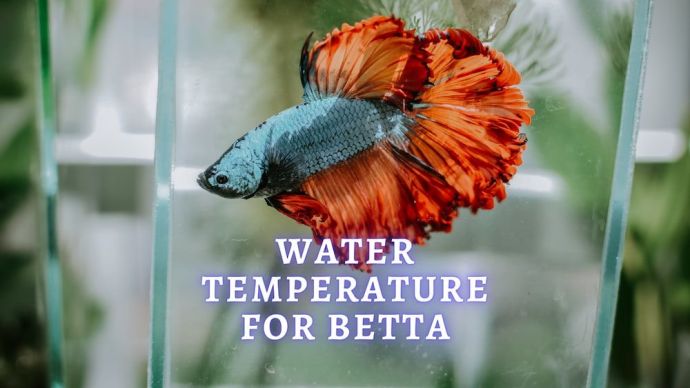 Freshwater Fish Betta Fish Temperatures: Guide To The Perfect Betta Fish Water Temperature
Freshwater Fish Betta Fish Temperatures: Guide To The Perfect Betta Fish Water Temperature - 252
- 0
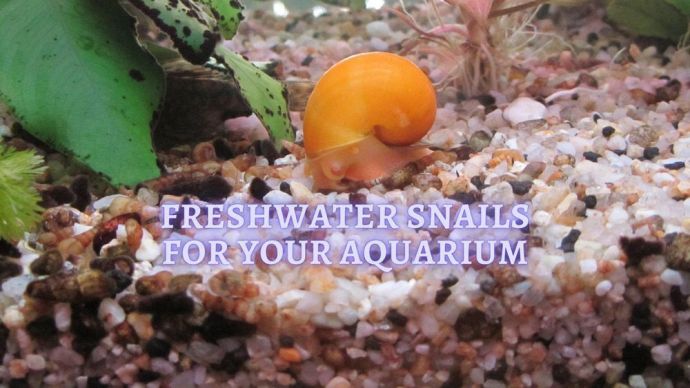 Fish Owners Tips Types of Freshwater Snails: Exotic cleaners for your Fish Tank
Fish Owners Tips Types of Freshwater Snails: Exotic cleaners for your Fish Tank - 1704
- 0
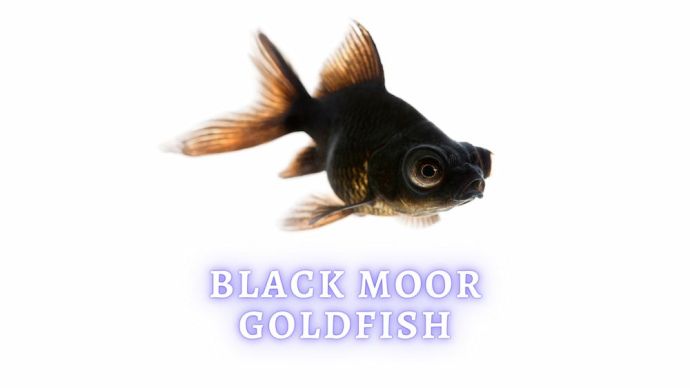 Freshwater Fish A Guide to the Black Moor Goldfish: Tank Setup, Temperatures and Care Routine
Freshwater Fish A Guide to the Black Moor Goldfish: Tank Setup, Temperatures and Care Routine - 136
- 0
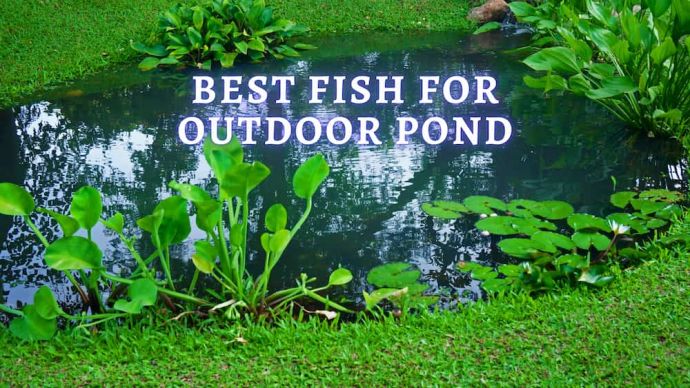 Freshwater Fish 15 Best Fish for Outdoor Ponds: Best and Easiest to Take Care Of
Freshwater Fish 15 Best Fish for Outdoor Ponds: Best and Easiest to Take Care Of - 108
- 0
 Freshwater Fish How to Treat Dropsy in Betta Fish? Recognizing Signs of Dropsy and Treat it In Time
Freshwater Fish How to Treat Dropsy in Betta Fish? Recognizing Signs of Dropsy and Treat it In Time - 102
- 0











